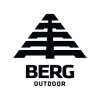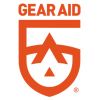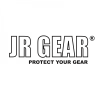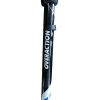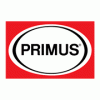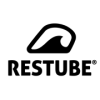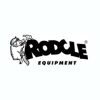Backpack Guide Part Α’ 10 – 30 L

Why buy a hiking backpack?
A 10-30 liter hiking backpack is a must for any nature lover who wants to escape for a few days trips. The contrast to classic backpacks is specially designed to safely and comfortably carry the equipment and food you need for your expedition. It may have a separate pouch for a water bottle or water bag as well as straps to add your gear.
What should you look for when buying a 10-30 liter hiking backpack?

Capacity:

Configuration:
Generally, mountaineering backpacks come in various configurations, such as hard back, soft back, or a combination of hard and soft back. The best choice for you will depend on your personal preferences and the type of hiking you will be doing. The soft back is lighter but the hard back provides better support.


Equipment:
Mountaineering backpacks have several features that make it easier to carry your gear. These include external pole or ice ax pockets, straps for ice skates or crampons, and adjustable shoulder and waist straps to distribute weight evenly.

Material:
Mountaineering backpacks are made from a variety of materials, including nylon, polyester, and waterproof polyester. The material of your backpack should be wear and water resistant. If its material is not waterproof be sure to get a waterproof cover in case it is not built into the backpack.

How to choose the right size?
-
Stand with your feet about shoulder width apart.
-
Put the backpack on the back and pull the waist and shoulder straps tight.
-
Do a few movements, such as bending down or standing up, to see if the backpack is comfortable and fits the body well. You should feel that it hugs you evenly.
-
If the waist strap does not rest firmly on the waist, the backpack is too big. If the waist strap is too tight, the backpack is too small.
A few popular hiking backpacks 10-30 L

Lowe Alpine Klettersack 30L Daypack
Additional advice
- Don't forget to try the backpack before you buy it. Put it on your back and walk around a bit to see if it's comfortable.
- If you plan to hike in mountains or rough terrain, choose a backpack with good lumbar support.
- Don't forget to add weight to the backpack when testing it to see if it's comfortable with a load.

Conclusions
There are a number of different hiking backpacks out there, each specifically designed to accommodate your individual needs. Make sure you know what kind of hike you are going to do, what kind of terrain and weather, what kind of equipment you will be carrying, and most importantly try on different backpacks to see which one fits you the best. Considering backpacks are one of the most important pieces of equipment, make sure your buy one that minimizes back and shoulder pains, so price should be considered second.
Recent posts
-
24/05/2024Backpack Guide Part Α’ 10 – 30 L
-
20/03/2024Guide for crampons
-
19/02/2024Hangboarding for beginners
-
06/02/2024Rock Climbing in Occupational Therapy
-
23/11/2023Climbing Grades
-
22/11/2023Climbing in psychotherapy
-
16/11/2023What is Bouldering
-
15/11/2023Trad VS Sport Climbing
-
15/11/2023Winter Tents
-
07/11/20233 Season Tents
-
03/11/2023Summer Tents
-
02/11/2023Lifespan Of Your Climbing Gear – Part B Metal Components
-
02/11/2023Lifespan Of Your Climbing Gear – Part A (Harness, Rope, Slings and Webbing)
-
30/10/2023Nail Vernis Aquaglutene - Vade Retro
-
30/10/2023THE LOG BOOK
-
30/10/2023Mountain cookware
-
30/10/2023Our Blog
-
30/10/2023Climbing Shoes - Quick Buying Guide
-
30/10/2023Washing and maintenance of the sleeping bag
-
30/10/2023Superlight Tents
-
30/10/2023ΙNFORMATION FOR CRAMPONS
-
30/10/2023Ice axe
-
30/10/2023INFLATABLE MATTRESS SLEEP
-
30/10/2023Nikwax secrets of waterproofing
-
30/10/2023What Is “Softshell”?
-
30/10/2023Slacklining, ένας εναλλακτικός τρόπος γυμναστικής.
-
30/10/2023Mountaineering - Hiking Boots
-
30/10/2023Waterproof Membranes
-
30/10/2023Sleeping Bags
-
30/10/2023Sleeping Mats
-
30/10/2023Base Layers
-
30/10/2023Climbing Helmets




















